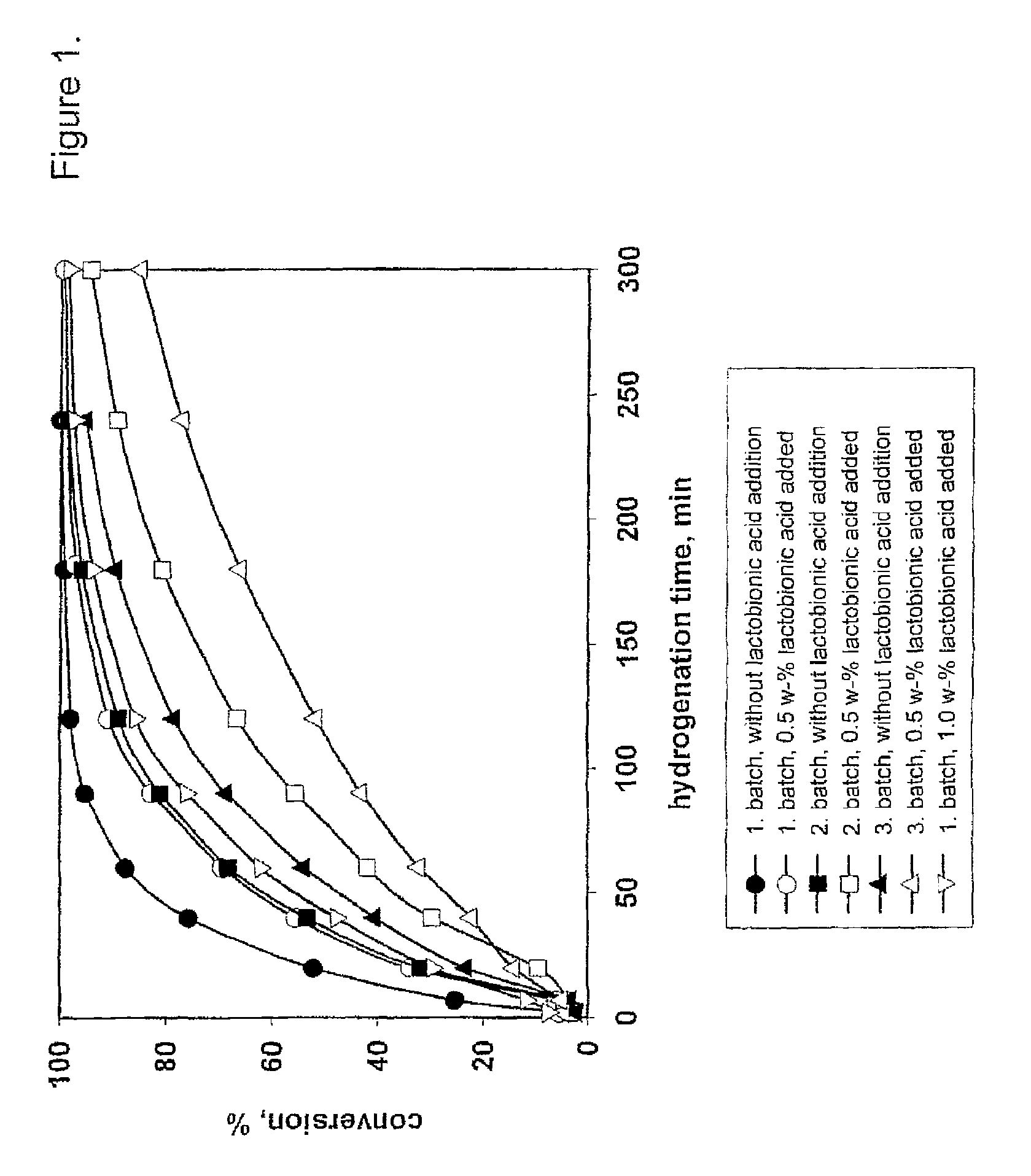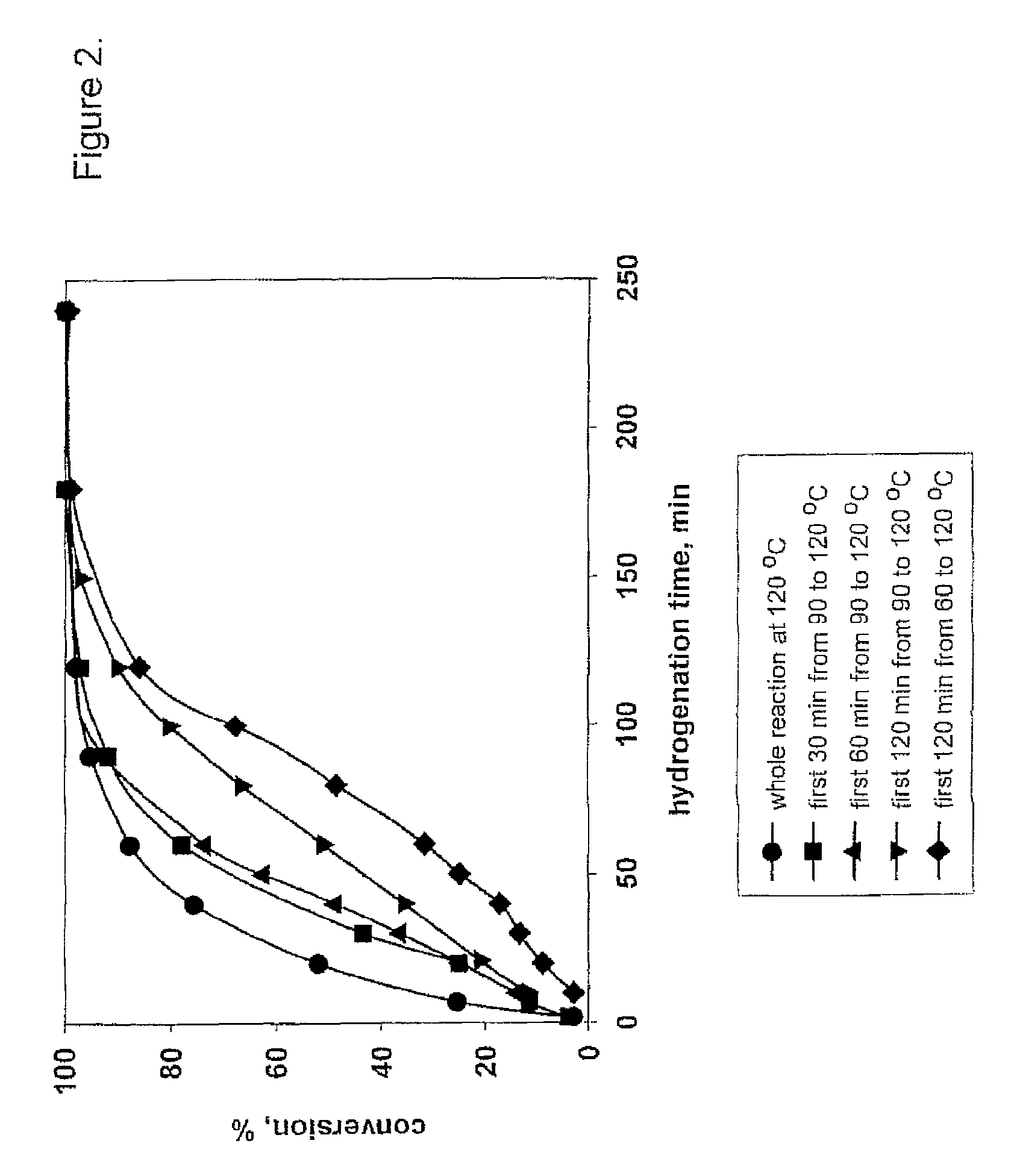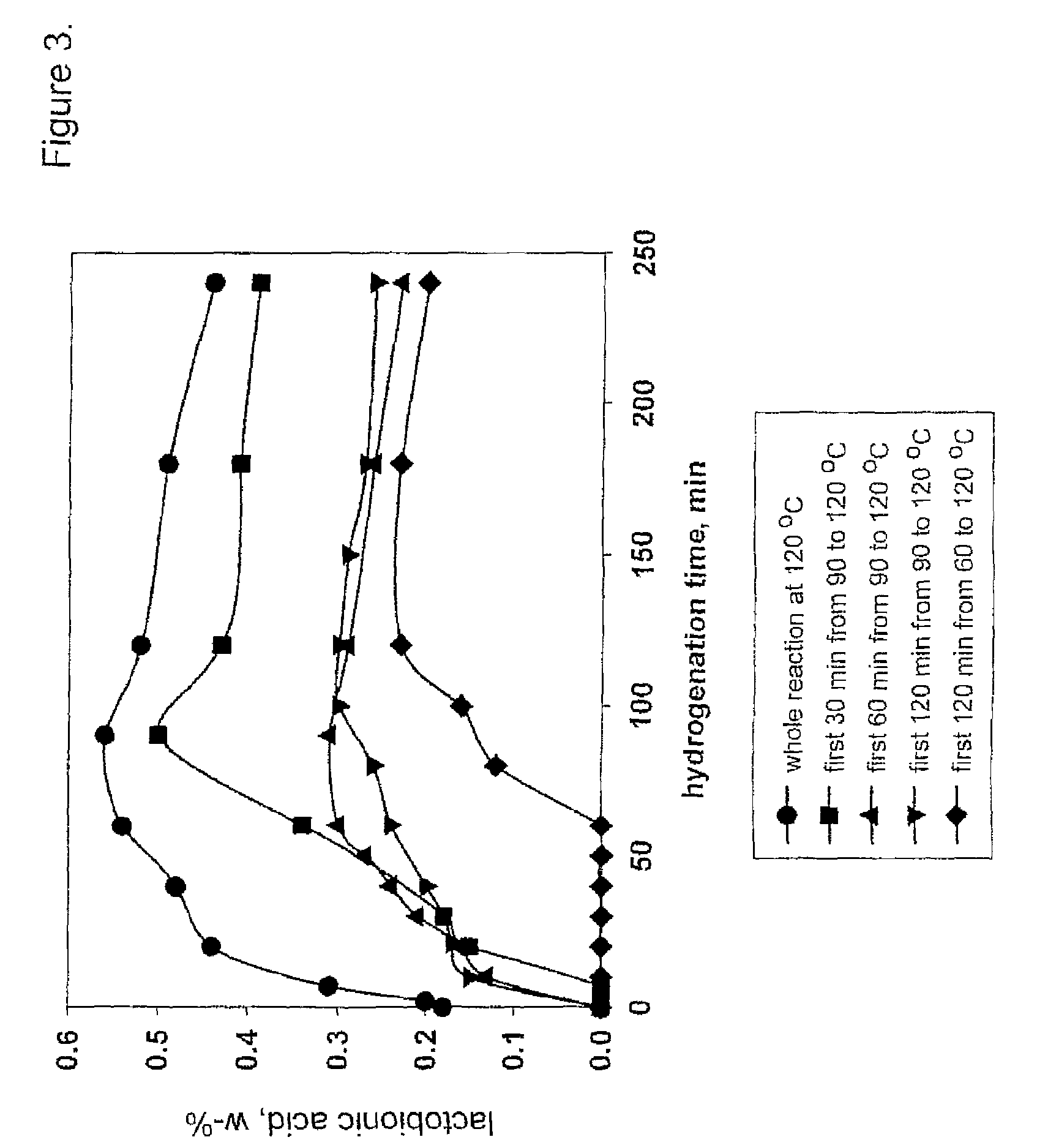Hydrogenation process for the production of a sugar alcohol
a technology of hydrogenation process and sugar alcohol, which is applied in the direction of sugar derivates, organic chemistry, chemistry apparatus and processes, etc., can solve the problem of shortening the catalyst life by adhesion to the catalyst surfa
- Summary
- Abstract
- Description
- Claims
- Application Information
AI Technical Summary
Benefits of technology
Problems solved by technology
Method used
Image
Examples
example 1
The Effect of Lactobionic Acid on the Hydrogenation of Lactose to Lactitol
[0103]Lactose (manufactured by Ault Foods) was dissolved in ion-exchanged water to obtain a lactose solution containing 40% lactose by weight. The lactose solution was introduced into a hydrogenation reactor, which was a 300 ml batch reactor (Parr Instrument Co.) equipped with a concave blade impeller. The hydrogenation was carried out at 120° C. and at a hydrogen pressure of 50 bar with a mixing rate of 1800 rpm over sponge nickel catalyst (manufactured by Activated Metals). The catalyst load in the experiments was 10% by weight (dry substance content of 50% by weight) of the initial lactose amount.
[0104]Three consecutive batches were hydrogenated with the same catalyst without the regeneration of the catalyst, whereby 0.5% by weight of lactobionic acid (calculated on the total lactose solution) was added to the lactose solution before the start of hydrogenation. In the same way, three consecutive batches wer...
example 2
The Effect of Sequential Temperature Adjustments (Temperature Ramping)
[0106]A lactose solution was prepared in the same way as in Example 1. The equipment used for the hydrogenation as well as the hydrogenation pressure, the mixing rate, the catalyst and the catalyst dosage in the hydrogenation were the same as in Example 1. Three consecutive batches were hydrogenated with the same catalyst without any regeneration of the catalyst in the same way as in Example 1.
[0107]The hydrogenations were performed for 240 minutes. The temperature in the hydrogenation reactor was adjusted during the hydrogenation and varied in the tests as follows (in test 1, the whole hydrogenation was carried out at the same final temperature, whereas in tests 2 to 5 the hydrogenation was started at a lower temperature and the temperature was then rised gradually to the final hydrogenation temperature):
[0108]Test 1: the whole reaction was carried out at 120° C.
[0109]Test 2: temperature ramping from 90° C. to 12...
example 3
The Effect of the Catalyst Amount on the Hydrogenation of Lactose
[0117]A lactose solution was prepared in the same way as in Example 1. The equipment used for the hydrogenation as well as the hydrogenation pressure, the mixing rate and the catalyst were the same as in Example 1. The hydrogenation was carried out with three different catalyst loadings of 5, 10 and 20% by weight of the catalyst (50% by weight of the dry substance content), calculated on the initial lactose amount. The hydrogenation time was 3 to 6 h. Hydrogenations were carried out without temperature ramping (the whole reaction was carried out at a temperature of 120° C.) or with temperature ramping from 90° C. to 120° C. (0.25° C. / min) during the first 120 minutes of the reaction.
[0118]The results of the tests are shown in FIGS. 5 to 8. The results show that the following advantages were achieved by the use of temperature ramping in accordance with the present invention with all the catalyst dosage levels.
[0119]FIG....
PUM
| Property | Measurement | Unit |
|---|---|---|
| temperature | aaaaa | aaaaa |
| temperature | aaaaa | aaaaa |
| temperature | aaaaa | aaaaa |
Abstract
Description
Claims
Application Information
 Login to View More
Login to View More - R&D
- Intellectual Property
- Life Sciences
- Materials
- Tech Scout
- Unparalleled Data Quality
- Higher Quality Content
- 60% Fewer Hallucinations
Browse by: Latest US Patents, China's latest patents, Technical Efficacy Thesaurus, Application Domain, Technology Topic, Popular Technical Reports.
© 2025 PatSnap. All rights reserved.Legal|Privacy policy|Modern Slavery Act Transparency Statement|Sitemap|About US| Contact US: help@patsnap.com



